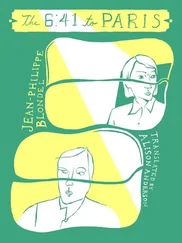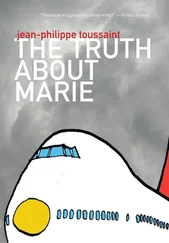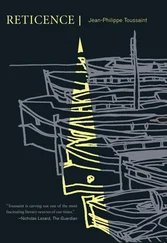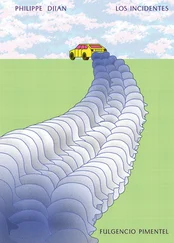Philippe Darche - Microprocessor 4
Здесь есть возможность читать онлайн «Philippe Darche - Microprocessor 4» — ознакомительный отрывок электронной книги совершенно бесплатно, а после прочтения отрывка купить полную версию. В некоторых случаях можно слушать аудио, скачать через торрент в формате fb2 и присутствует краткое содержание. Жанр: unrecognised, на английском языке. Описание произведения, (предисловие) а так же отзывы посетителей доступны на портале библиотеки ЛибКат.
- Название:Microprocessor 4
- Автор:
- Жанр:
- Год:неизвестен
- ISBN:нет данных
- Рейтинг книги:4 / 5. Голосов: 1
-
Избранное:Добавить в избранное
- Отзывы:
-
Ваша оценка:
- 80
- 1
- 2
- 3
- 4
- 5
Microprocessor 4: краткое содержание, описание и аннотация
Предлагаем к чтению аннотацию, описание, краткое содержание или предисловие (зависит от того, что написал сам автор книги «Microprocessor 4»). Если вы не нашли необходимую информацию о книге — напишите в комментариях, мы постараемся отыскать её.
Microprocessor 4 — читать онлайн ознакомительный отрывок
Ниже представлен текст книги, разбитый по страницам. Система сохранения места последней прочитанной страницы, позволяет с удобством читать онлайн бесплатно книгу «Microprocessor 4», без необходимости каждый раз заново искать на чём Вы остановились. Поставьте закладку, и сможете в любой момент перейти на страницу, на которой закончили чтение.
Интервал:
Закладка:
176 169
177 171
178 172
179 173
180 174
181 175
182 176
183 177
184 178
185 179
186 180
187 181
188 182
189 183
190 184
191 185
192 186
193 187
194 188
195 189
196 190
197 191
198 192
199 193
200 194
201 195
202 197
203 198
204 199
205 200
206 201
207 202
208 203
209 204
210 205
211 206
212 207
213 208
214 209
215 210
216 211
217 212
218 213
219 214
220 215
221 216
222 217
223 218
224 219
225 220
226 221
227 222
228 223
229 224
230 225
231 226
232 227
233 228
234 229
235 231
236 232
237 233
238 234
239 235
240 236
241 237
242 238
243 239
244 240
245 241
Series EditorJean-Charles Pomerol
Microprocessor 4
Core Concepts – Software Aspects
Philippe Darche

First published 2020 in Great Britain and the United States by ISTE Ltd and John Wiley & Sons, Inc.
Apart from any fair dealing for the purposes of research or private study, or criticism or review, as permitted under the Copyright, Designs and Patents Act 1988, this publication may only be reproduced, stored or transmitted, in any form or by any means, with the prior permission in writing of the publishers, or in the case of reprographic reproduction in accordance with the terms and licenses issued by the CLA. Enquiries concerning reproduction outside these terms should be sent to the publishers at the undermentioned address:
ISTE Ltd
27-37 St George’s Road
London SW19 4EU
UK
www.iste.co.uk
John Wiley & Sons, Inc.
111 River Street
Hoboken, NJ 07030
USA
www.wiley.com
© ISTE Ltd 2020
The rights of Philippe Darche to be identified as the author of this work have been asserted by him in accordance with the Copyright, Designs and Patents Act 1988.
Library of Congress Control Number: 2020943937
British Library Cataloguing-in-Publication Data
A CIP record for this book is available from the British Library
ISBN 978-1-78630-566-4
Quotation
Every advantage has its disadvantages and vice versa .
Shadokian philosophy 1
1 1 The Shadoks are the main characters from an experimental cartoon produced by the Research Office of the Office de Radiodiffusion-Télévision Française (ORTF). The two- minute-long episodes of this daily cult series were broadcast on ORTF's first channel (the only one at the time!) beginning in 1968. The birds were drawn simply and quickly using an experimental device called an animograph.
2 The Shadoks are ridiculous, stupid and mean. Their intellectual capacities are completely unusual. For example, they are known for bouncing up and down, but it is not clear why! Their vocabulary consists of four words: GA, BU, ZO and MEU, which are also the four digits in their number system (base 4) and the musical notes in their four-tone scale. Their philosophy is comprised of famous mottos such as the one cited in this book.
Preface
Computer systems (hardware and software) are becoming increasingly complex, embedded and transparent. It therefore is becoming difficult to delve into basic concepts in order to fully understand how they work. In order to accomplish this, one approach is to take an interest in the history of the domain. A second way is to soak up technology by reading datasheets for electronic components and patents. Last but not least is reading research articles. I have tried to follow all three paths throughout the writing of this series of books, with the aim of explaining the hardware and software operations of the microprocessor, the modern and integrated form of the central unit.
About the book
This five-volume series deals with the general operating principles of the microprocessor. It focuses in particular on the first two generations of this programmable component, that is, those that handle integers in 4- and 8-bit formats. In adopting a historical angle of study, this deliberate decision allows us to return to its basic operation without the conceptual overload of current models. The more advanced concepts, such as the mechanisms of virtual memories and cache memory or the different forms of parallelism, will be detailed in a future book with the presentation of subsequent generations, that is, 16-, 32- and 64-bit systems.
The first volume addresses the field's introductory concepts. As in music theory, we cannot understand the advent of the microprocessor without talking about the history of computers and technologies, which is presented in the first chapter. The second chapter deals with storage, the second function of the computer present in the microprocessor. The concepts of computational models and computer architecture will be the subject of the final chapter.
The second volume is devoted to aspects of communication in digital systems from the point of view of buses. Their main characteristics are presented, as well as their communication, access arbitration, and transaction protocols, their interfaces and their electrical characteristics. A classification is proposed and the main buses are described.
The third volume deals with the hardware aspects of the microprocessor. It first details the component's external interface and then its internal organization. It then presents the various commercial generations and certain specific families such as the Digital Signal Processor (DSP) and the microcontroller. The volume ends with a presentation of the datasheet.
The fourth volume deals with the software aspects of this component. The main characteristics of the Instruction Set Architecture (ISA) of a generic component are detailed. We then study the two ways to alter the execution flow with both classic and interrupt function call mechanisms.
The final volume presents the hardware and software aspects of the development chain for a digital system as well as the architectures of the first microcomputers in the historical perspective.
Multi-level organization
This book gradually transitions from conceptual to physical implementation. Pedagogy was my main concern, without neglecting formal aspects. Reading can take place on several levels. Each reader will be presented with introductory information before being asked to understand more difficult topics. Knowledge, with a few exceptions, has been presented linearly and as comprehensively as possible. Concrete examples drawn from former and current technologies illustrate the theoretical concepts.
When necessary, exercises complete the learning process by examining certain mechanisms in more depth. Each volume ends with bibliographic references including research articles, works and patents at the origin of the concepts and more recent ones reflecting the state of the art. These references allow the reader to find additional and more theoretical information. There is also a list of acronyms used and an index covering the entire work.
This series of books on computer architecture is the fruit of over 30 years of travels in the electronic, microelectronic and computer worlds. I hope that it will provide you with sufficient knowledge, both practical and theoretical, to then specialize in one of these fields. I wish you a pleasant stroll through these different worlds.
Читать дальшеИнтервал:
Закладка:
Похожие книги на «Microprocessor 4»
Представляем Вашему вниманию похожие книги на «Microprocessor 4» списком для выбора. Мы отобрали схожую по названию и смыслу литературу в надежде предоставить читателям больше вариантов отыскать новые, интересные, ещё непрочитанные произведения.
Обсуждение, отзывы о книге «Microprocessor 4» и просто собственные мнения читателей. Оставьте ваши комментарии, напишите, что Вы думаете о произведении, его смысле или главных героях. Укажите что конкретно понравилось, а что нет, и почему Вы так считаете.












